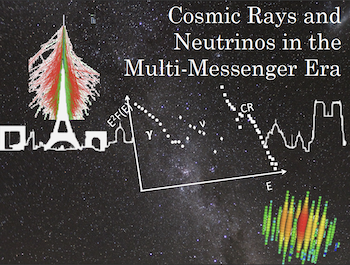Description
Extensive air showers arise due to particles coming from the Universe interacting with the atmosphere. In these high-energetic interactions, many particles of different types
are produced.
Since muons have a long lifetime and thus a long range compared to other particles in the air shower, they are abundant even on the Earth's surface. These muons are detected with air shower detectors and also underground muon experiments.
The resulting muon flux is divided into a conventional and a prompt component. The prompt muons come from parent particles with a very short lifetime, causing the spectrum of the prompt
component nearly to follow the primary spectrum. Particles with lifetimes larger than picoseconds such as pions and kaons live long enough to interact with the atmosphere which results in energy losses. Muons
from decays of these particles are called conventional and follow a softer energy spectrum.
Ideas to measure the prompt muon flux using the IceCube Neutrino Observatory are presented based on previous analyses. New CORSIKA simulations will be performed in the future and re-weighting should be used to
create several datasets with different scalings of the prompt component. At the end, an unfolding as well as a fit of the normalization will be performed.

